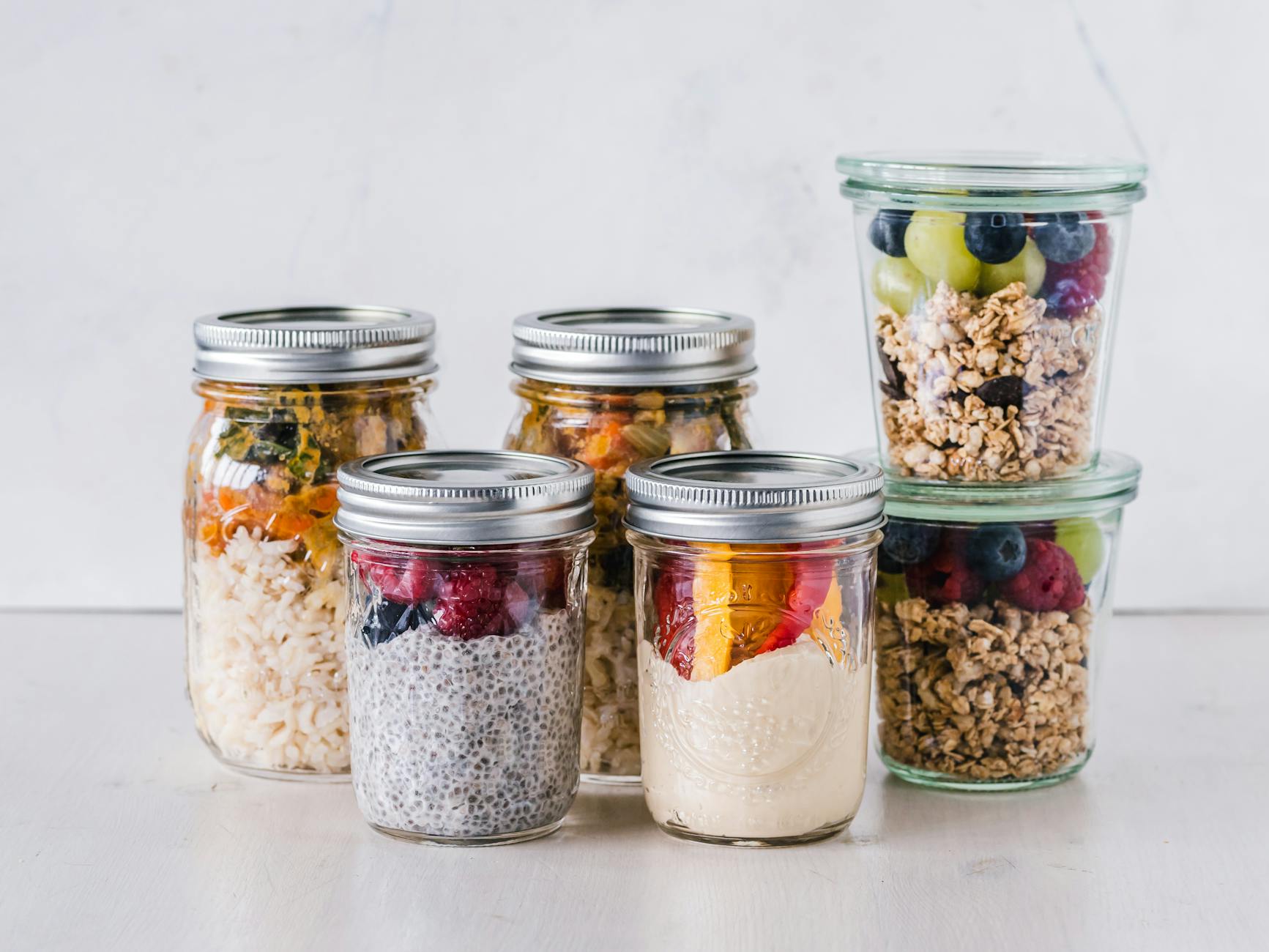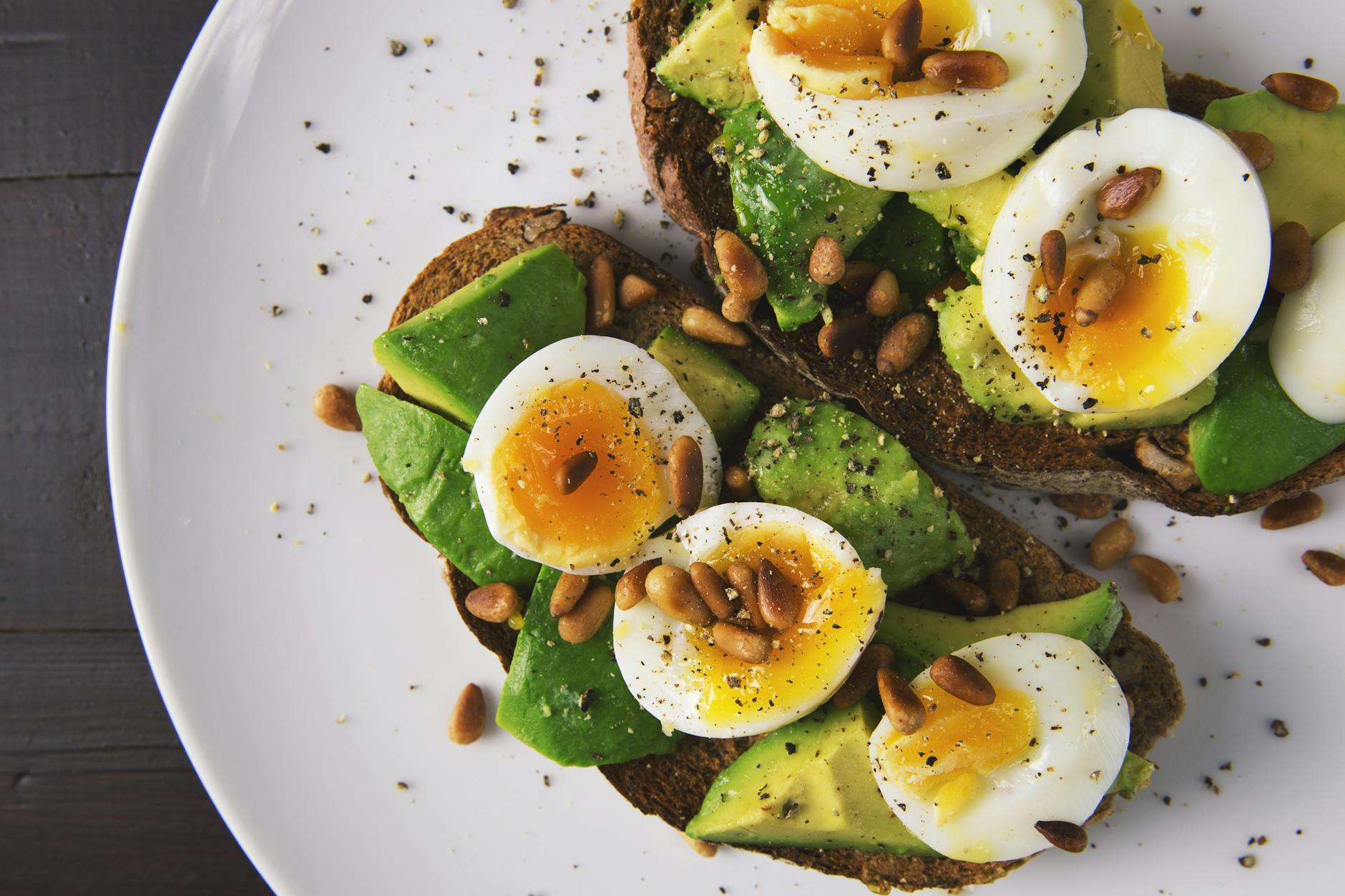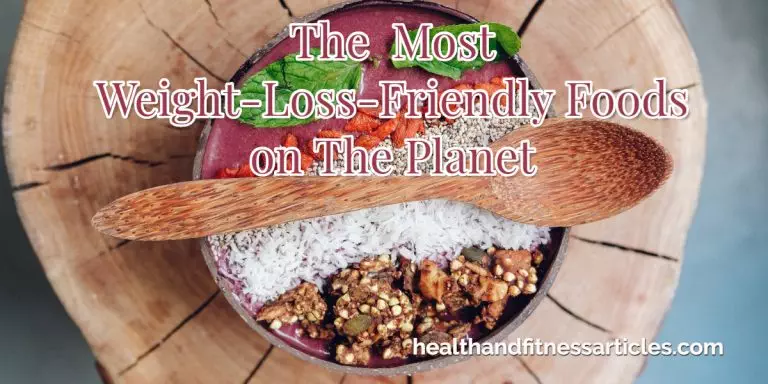Unlock the Secret to Vibrant Health with The Alkaline Diet: You Won’t Believe the Results
Curious about why so many are switching to the Alkaline Diet?
This eating plan focuses on foods believed to help balance your body’s pH and promote better health.
Supporters claim that the Alkaline Diet can improve energy levels, enhance digestion, and even protect against certain illnesses.
The buzz around it is strong, but what’s actually in the diet—and what results can you expect?
Here, you’ll find a clear breakdown of how the Alkaline Diet works, which foods are included, and the claimed health benefits.
You’ll also see what experts say, plus the common debates and controversies that keep this trend in the spotlight.
If you want honest, easy-to-understand answers about the Alkaline Diet, you’re in the right place.
- Howard, Linette (Author)
- English (Publication Language)
- 109 Pages – 01/04/2025 (Publication Date) – Independently published (Publisher)
Last update on 2025-12-20 / Affiliate links / Images from Amazon Product Advertising API
What Is the Alkaline Diet?
The Alkaline Diet is a popular approach aimed at helping you feel your best through the food you eat.
Its main idea is simple: eat foods that help keep your body’s pH slightly more alkaline, in hopes of boosting health and protecting against common issues like fatigue and inflammation.
Here’s how this way of eating started, what it means for your body’s pH, and how different foods fit into the plan.
 Photo by Ella Olsson
Photo by Ella Olsson
The Roots of the Alkaline Diet
People have been interested in balancing “acid” and “alkaline” in the body for decades, but the Alkaline Diet became popular in the early 2000s.
The idea came from a theory that certain foods can change your internal chemistry.
It’s said to be inspired by the belief that modern diets—high in processed foods, sugar, and animal products—make us more acidic, which may lead to poor health.
Many early books and advocates pointed to ancient eating habits and the supposed natural diets of our ancestors.
They argued that eating more fresh fruits, vegetables, nuts, and seeds mimics the eating patterns of people who were less likely to suffer from lifestyle diseases.
Body pH: What Does It Mean?
Your blood and many other parts of your body have a pH, which shows how acidic or alkaline they are. The pH scale runs from 0 (most acidic) to 14 (most alkaline), with seven being neutral.
A healthy blood pH usually stays just a little above neutral, between 7.35 and 7.45. Tiny changes in this range can have significant effects on your health.
Your body works hard to keep this balance through your kidneys, lungs, and blood.
People supporting the Alkaline Diet believe that eating more alkaline-forming foods (like fruits and veggies) helps the body maintain this pH balance.
You might hear that having a balanced body pH can help you avoid “acidic” conditions linked to various problems.
However, medical science indicates that your system already maintains a stable blood pH on its own.
For more details about how pH works in your body, see this helpful guide on pH in the human body.
Acidic and Alkaline Foods
Every food you eat, once digested, leaves behind what’s called an “ash.”
This is just a fancy way of saying that certain foods might be considered acid-forming or alkaline-forming, based on how they affect your urine.
- Alkaline-forming foods: Most fruits, veggies, nuts, and legumes.
- Acid-forming foods: Meat, eggs, dairy, most grains, and processed foods.
- Neutral foods: Natural fats, starches, and sugars.
Supporters of the Alkaline Diet often urge you to choose more from the first group and to cut down on the second.
The goal is to shape your meals around colorful produce, especially leafy greens, and keep acidic foods in check.
This way of eating won’t change your blood pH, but eating more plant-based foods can help with overall wellness and digestion.
What Does the Science Say?
There’s a lot of debate about how much diet can truly impact your pH.
While the basic science tells us your body keeps its balance, fans of the Alkaline Diet claim that these food choices can ease stress on the kidneys, improve energy, and lower inflammation.
Some small studies hint that an alkaline-heavy meal plan may benefit bone health and muscle strength.
For trusted information on how your body keeps pH in check, take a look at this guide on acid base balance.
On the other hand, mainstream nutrition experts and medical doctors generally emphasize that consuming more fruits and vegetables is a healthy practice, regardless of the context.
However, most healthy bodies naturally regulate their pH levels through the kidneys and lungs.
For those curious about symptoms and causes of pH imbalance, check out this clear resource on pH imbalance, acidosis, and alkalosis.
If you want ideas on simple plant-based options, see our list of top high-fiber foods to include in your diet.
The Alkaline Diet invites you to eat more real, whole foods—something most nutrition experts agree is a positive step for anyone focused on better health.
Health Claims and Potential Benefits
Supporters of the Alkaline Diet make some big promises. They say this way of eating can unlock more energy, help you lose weight, and guard against illness.
These claims resonate with many who seek straightforward solutions for improved health and long-term wellness.
But what does science say about these health benefits? Let’s look closer at how these claims stack up against the evidence.
Alkaline Diet and Disease Prevention
A significant draw for the Alkaline Diet is its reputation for protecting against disease.
People often talk about its possible impact on problems like osteoporosis, cancer, and kidney stones.
These conditions are top of mind for anyone seeking to maintain their health as they age.
- Osteoporosis: Some believe that acidic foods, like meats and processed snacks, can pull minerals from your bones and make them weaker. The idea is that a more alkaline diet, built on fruits and vegetables, keeps your bones stronger. Scientific reviews highlight that diets rich in fruits and veggies (which happen to be alkaline-forming) support bone health thanks to their natural potassium, magnesium, and other minerals. Learn more about these connections in research that digs into dietary acid and bone loss.
- Cancer: There’s a popular claim that cancer “thrives” in acidic environments, and that eating alkaline foods could somehow stop cancer from growing. Realistically, your body keeps its pH balanced no matter what you eat, and scientists have found no direct proof that changing your diet’s acid-alkaline balance will prevent or treat cancer. Still, because the Alkaline Diet emphasizes whole, plant-based foods, it does overlap with recommendations for reducing cancer risk. If you’re curious about what science says, this article on the truth behind alkaline diet and cancer provides a balanced look.
- Kidney Stones: One better-supported benefit is in kidney health. Diets high in vegetables and fruits may help reduce the risk of kidney stones, especially those of certain types. This is partly because these foods can change the acidity of your urine (not your blood), making it harder for some stones to form. The Alkaline Diet’s focus fits well here, promoting foods that may lower certain risk factors.
 Photo by Toni Cuenca
Photo by Toni Cuenca
What Do Studies Show?
When you dig into actual research, the story gets clearer.
Reviews like this piece on whether an alkaline pH diet benefits health show that eating more alkaline-forming foods may offer some protection against chronic disease, but not because it changes blood pH.
Instead, this diet steers you toward nutrient-rich, natural foods, which support your body’s systems in many ways.
- Increased fruit and veggie intake has links to better bone health
- Cutting processed foods and eating more plants helps your weight and digestion
- Less salt and more minerals support kidney function
Science backs up that whole foods and plant-based meals are good for you, whether or not you’re focused on acid and alkaline balance.
For a better understanding of nutrition’s impact on disease risk, see our article on the role of diet in disease prevention.
Why This Diet Appeals to Health Seekers
The Alkaline Diet’s big selling point is its promise of a straightforward, positive path to more energy and better health.
For many, eating in a way that feels simple and natural—built around lots of colorful, real foods—makes sense both in theory and in practice.
Even if its claims about pH are more myth than fact, most experts agree: plant-forward eating is a solid choice for anyone aiming for wellness.
For those looking to add more of these foods to their day, practical guides like our healthy grocery shopping tips can help you get started without feeling overwhelmed.
- Montes, Rosalinda (Author)
- English (Publication Language)
- 216 Pages – 11/03/2024 (Publication Date) – Independently published (Publisher)
Last update on 2025-12-19 / Affiliate links / Images from Amazon Product Advertising API
What Foods Can You Eat on the Alkaline Diet?
Choosing the right foods is at the core of the Alkaline Diet.
The focus is on eating more whole, plant-based foods—think colorful fruits, crisp vegetables, wholesome nuts, and legumes.
These foods are considered “alkaline-forming” and make up the bulk of each meal.
At the same time, you’ll want to limit animal-based and processed foods, which are seen as “acid-forming.”
Let’s break down what you can eat, what to skip, and innovative strategies to ease your transition.
Tips for Transitioning to the Alkaline Diet
Switching to the Alkaline Diet can feel like a significant shift at first, but with the right approach, it’s more manageable than you might expect.
Here’s how to get started:
Focus on What to Eat
The Alkaline Diet encourages you to fill your plate with:
- Fruits: Apples, bananas, cherries, watermelon, cantaloupe, avocado, apricots, and berries.
- Vegetables: Leafy greens like kale and spinach, broccoli, beets, asparagus, cucumber, zucchini, carrots, and mushrooms.
- Nuts and Seeds: Almonds, chestnuts, and flaxseeds are top picks.
- Legumes: Lentils, chickpeas, and peas.
- Whole Grains (in moderation): Quinoa, brown rice, and millet can be enjoyed sometimes.
Try to make at least 70% of your meals come from these foods, aiming for a colorful and varied plate.
For a deeper dive into food choices and a handy chart of alkaline foods, see this practical list of alkaline foods and recipes.
Foods to Avoid or Limit
Stay mindful of foods that are higher in acid-forming compounds:
- Processed foods like chips, cookies, and candy
- Red meat and most types of meat and poultry
- Eggs and dairy (cheese, milk, yogurt)
- Refined grains and most breads
- Sugary drinks and alcohol
These foods are best kept as occasional treats rather than daily choices.
Check this valuable guide for a more complete rundown on what to avoid on the alkaline diet.
Sample Meals and Smart Combos
Balancing your plate is key to enjoying the Alkaline Diet.
Here are examples of what a typical day could look like:
Breakfast:
- Overnight oats with almond milk, blueberries, and chopped walnuts
- Sliced avocado on sprouted grain toast with cherry tomatoes
 Photo by Foodie Factor
Photo by Foodie Factor
Lunch:
- Big salad packed with spinach, cucumber, shredded carrots, bell pepper, and chickpeas
- Olive oil and lemon dressing on the side
Snack:
- An apple with almond butter
- A handful of raw almonds
Dinner:
- Stir-fried tofu with broccoli, snap peas, and mushrooms, served over quinoa.
- Roasted sweet potatoes with garlic and herbs
For more meal ideas, see these easy alkaline diet recipes for inspiration you can use all week.
Here are ten alkaline diet recipes that focus on plant-based ingredients known to help balance your body’s pH levels:
- Quinoa and Spinach Salad
- Ingredients: Quinoa, fresh spinach, cherry tomatoes, cucumber, avocado, lemon juice, olive oil, salt, and pepper.
- Instructions: Cook the quinoa according to package instructions. Combine with chopped spinach, halved cherry tomatoes, diced cucumber, and sliced avocado. Dress with a mixture of olive oil, lemon juice, salt, and pepper.
- Zucchini Noodles with Avocado Sauce
- Ingredients: Zucchini, ripe avocado, basil leaves, garlic, lemon juice, nutritional yeast, salt, and pepper.
- Instructions: Spiralize zucchini into noodles. Blend avocado, basil, garlic, lemon juice, and nutritional yeast until smooth. Toss zucchini noodles with the sauce and season with salt and pepper to taste.
- Alkaline Green Smoothie
- Ingredients: Kale, spinach, cucumber, apple, lemon juice, ginger, and water.
- Instructions: Blend kale, spinach, chopped cucumber, sliced apple, lemon juice, a piece of ginger, and water until smooth. Adjust the consistency with additional water if needed.
- Roasted Vegetable Medley
- Ingredients: Sweet potatoes, carrots, red bell peppers, zucchini, olive oil, rosemary, salt, and pepper.
- Instructions: Cut vegetables into uniform pieces. Toss with olive oil, rosemary, salt, and pepper. Spread on a baking sheet and roast at 400°F (200°C) for 30-35 minutes or until tender.
- Chickpea and Vegetable Stir-Fry
- Ingredients: Chickpeas, broccoli, bell peppers, onion, garlic, tamari sauce, olive oil.
- Instructions: Sauté garlic and onion in olive oil, add broccoli and bell peppers, and stir-fry until just tender. Add chickpeas and tamari sauce, cooking for a few more minutes until everything is heated through.
- Cucumber and Avocado Gazpacho
- Ingredients: Cucumber, avocado, garlic, fresh dill, lime juice, and water.
- Instructions: Blend cucumber, avocado, garlic, dill, lime juice, and water until smooth. Chill in the refrigerator and serve cold.
- Sweet Potato and Lentil Burgers
- Ingredients: Sweet potatoes, cooked lentils, onion, garlic, cumin, chili powder, salt, pepper, olive oil.
- Instructions: Mash cooked sweet potatoes and mix with lentils, diced onion, minced garlic, cumin, chili powder, salt, and pepper. Form the mixture into patties. Fry in olive oil until golden on each side.
- Almond and Berry Parfait
- Ingredients: Almond yogurt, mixed berries (such as blueberries and raspberries), almond slices, chia seeds.
- Instructions: Layer almond yogurt with a mix of your favorite berries, a sprinkle of almond slices, and chia seeds in a glass or bowl and serve.
- Sweet Pepper and Quinoa Stuffed Avocados
- Ingredients: Avocado, cooked quinoa, red bell pepper, corn, lime juice, cilantro, salt, and pepper.
- Instructions: Cut avocados in half and remove the pit. Mix cooked quinoa, diced bell pepper, corn, lime juice, and cilantro. Season with salt and pepper and fill the avocado halves with the mixture.
- Mint and Pineapple Detox Juice
- Ingredients: Fresh pineapple, fresh mint leaves, cucumber, lime, and water.
- Instructions: Blend fresh pineapple chunks, a handful of mint leaves, cucumber slices, lime juice, and water. Strain if desired and serve chilled.
These recipes are designed to include ingredients typically associated with the alkaline diet, which emphasizes whole, plant-based foods.
- SUPERFOOD SUPPLEMENT: This greens powder is packed with RAW organic grass juices and antioxidant filled RAW organic fruit and vegetable juices with highly alkalizing raw organic lemon juice and raw organic parsley
- ELECTROLYTE SUPPLEMENT: Our greens supplement includes raw organic coconut water for hydration and electrolyte replenishment
- CLEANSING HERBS: One serving of this superfood supplement contains eight powerful cleansing herbs for daily detoxification
- DIGESTIVE SUPPORT: Our greens powder contains a probiotics and enzymes for digestion support and RAW organic ginger for digestion soothing
- VEGAN GREENS: This superfood powder is Vegan, Certified Organic, Dairy Free, Soy Free with No Whole Grass Fillers and No Preservatives
Last update on 2025-12-20 / Affiliate links / Images from Amazon Product Advertising API
Meal Planning and Shopping Tips
Planning makes success much easier.
Here’s how to simplify the process:
- Create a weekly menu. Write down 3-4 simple meals you know you’ll enjoy and can batch-cook.
- Stock your kitchen with basics. Keep plenty of fresh and frozen veggies, lemons, nuts, and brown rice on hand.
- Shop the perimeter of the store. That’s usually where you’ll find the freshest produce and healthy proteins.
- Cut back on packaged foods. Swap processed snacks for fruit, veggie sticks, or a handful of seeds.
- Use leftovers wisely. Add yesterday’s roasted veggies to a salad or wraps for a quick meal.
If you’re looking for a practical approach to buying groceries, these healthy grocery shopping tips will help keep your shopping list focused and affordable.
Making the Alkaline Diet part of your routine doesn’t have to be overwhelming.
By concentrating on whole foods and a bit of planning, you’ll quickly find meals that taste great and support better health.
Controversies and Common Myths
The Alkaline Diet stirs up plenty of debate—not just at the dinner table, but among health experts.
You’ll find bold health claims on one side, skeptical doctors on the other, and lots of everyday myths in between.
It’s easy to get caught up in advice that sounds scientific but doesn’t always hold water.
Here’s a closer look at what’s real and what’s not, guided by facts and expert perspectives.
Is the Alkaline Diet Safe for Everyone?
While a focus on plant-based, whole foods can work for most people, there are important exceptions.
The Alkaline Diet isn’t a “one size fits all” plan.
There are risks associated with particular groups, particularly those with complex health conditions or special dietary requirements.
People who should proceed with caution or avoid the diet:
- Those with kidney problems. Kidneys play a key role in maintaining your body’s pH balance. People with kidney disease or compromised kidney function must avoid sudden, high intakes of certain minerals (like potassium, found in many alkaline-forming foods). Dramatic diet changes may exacerbate symptoms or interact with medications.
- Anyone with chronic health conditions. Diabetes, heart issues, or other metabolic disorders may require tailored eating plans. Shifting to a restrictive diet could disrupt blood sugar or nutrient levels.
- Individuals with a history of eating disorders. Highly restrictive food lists can encourage unhealthy behaviors or anxiety about food.
- Children, teens, and pregnant or breastfeeding women. These groups require a variety of nutrients for growth and development, and strict diets may limit access to essential foods.
Always consult a healthcare provider before making significant changes.
A registered dietitian can also help create a personalized plan that suits your body, lifestyle, and goals.
Myths and Misunderstandings
Some claims about the Alkaline Diet can be misleading.
Here are the most common:
- Myth: Eating alkaline foods will change your blood pH. Your blood pH stays in a very tight range. What you eat can alter the pH of your urine, but your body tightly controls blood pH, no matter what’s on your plate. The idea that you can “alkalize” your blood with food just isn’t accurate.
- Myth: Acidic foods are always unhealthy. Foods labeled “acidic”—such as tomatoes or citrus—bring plenty of nutrition. Nutrient quality matters more than “acid” or “alkaline” categories.
- Myth: The diet cures disease. You may see stories about the diet curing cancer, diabetes, or reversing the effects of aging. These stories are not backed by science. What experts agree on: eating more fruits, vegetables, and whole foods is healthy for almost everyone.
Actual benefits from the Alkaline Diet often come from eating more plants, fiber, and fresh foods—and cutting processed ones—not from changing your body chemistry.
For more science-based tips for better eating, check out how superfoods support immune health as an example of practical, evidence-backed nutrition.
Remember, internet trends and miracle diets are no substitute for advice from qualified health professionals.
When in doubt, rely on credible sources and your medical team to guide safe choices.
Practical Considerations and Lifestyle Tips
Bringing the Alkaline Diet into your real, everyday life can seem like a challenge at first.
But with a bit of practice, it quickly becomes a natural part of your routine.
Making small changes, such as adjusting your meal choices or reconsidering nights out with friends, can help you achieve lasting results.
Below, you’ll find simple, realistic guidance on making the Alkaline Diet work in your busy schedule, especially when eating with others or navigating social situations.
Making the Alkaline Diet Fit Your Daily Life
Fitting the Alkaline Diet into a busy lifestyle is about small, consistent choices.
Nobody wants a plan that feels like a chore!
Here are some ways to make plant-focused, alkaline-forming meals stress-free and straightforward:
- Prep fresh fruits and veggies in advance so they’re always ready to grab.
- Build meals around colorful salads, stir-fries, or hearty soups.
- Keep nuts, seeds, and sliced veggies handy for snacking.
- Use herbs, lemon juice, and olive oil to flavor dishes instead of heavy sauces.
For those looking to build healthier routines overall, exploring ideas for healthy eating habits can help anchor the Alkaline Diet in real life.
 Photo by Nathan Cowley
Photo by Nathan Cowley
Eating Out and Socializing
Enjoying the Alkaline Diet doesn’t mean saying no to restaurants or gatherings with loved ones.
Here are simple ways to keep your plan on track:
- Browse menus online before dining out and look for veggie-packed dishes, big salads, or stir-fried tofu.
- Don’t hesitate to ask for extra veggies or swaps like fruit instead of fries.
- If you’re headed to a party, bring a plant-based dish to share.
- When dining with friends, focus on enjoying good company rather than worrying about being perfect with your food choices.
These strategies help you stay committed to your goals without missing out on life’s most essential moments.
Family Meals and Living With Others
It can be tricky to follow the Alkaline Diet when those around you aren’t on the same page. Instead of making separate meals, aim for simple swaps.
Roast a big pan of veggies everyone can share, or offer whole grain options alongside standard bread or pasta.
Even little changes—like serving a green salad every night—can help everyone eat better.
Encourage kids and partners to try colorful fruits and veggies by getting them involved in meal prep. Mixing and matching side dishes means nobody feels left out, and everyone gets more nutrition.
Sustainability and Facing Challenges
Sticking with the Alkaline Diet long-term takes planning and flexibility.
While eating more plants is always a plus, some people find the diet restrictive after a while.
Here’s how to keep things doable:
- Allow yourself a “treat meal” once in a while—life is about balance, not perfection.
- Stay inspired by finding new plant-based recipes or foods to try.
- Remember, what matters most is your overall eating pattern, not every single plate.
- Listen to your body and adjust based on how you feel.
You don’t have to do it all at once—small, steady changes stick best.
Many who succeed with the Alkaline Diet blend its core ideas with other nutritional eating tips, building a lifestyle they enjoy.
Choosing the Alkaline Diet is really about making eating fruits and vegetables a daily habit.
With the right approach, it’s less about rules and more about living in a way that supports lasting health.
- Health Benefits: Use our pH test strips to regularly monitor your health by checking your pH balance, playing a crucial role in maintaining optimal wellness
- Great Feature: Our saliva pH test kit contains 200 pH litmus paper ph test strips. This ample supply offers exceptional value, allowing for accurate and frequent monitoring of your pH level, essential for maintaining health
- Ease of Use: Effortlessly measure pH levels with our ph paper test strips for urine and saliva, ensuring accurate home testing without complex equipment. Quick, precise results in seconds, simplifying health monitoring
- Precise Accuracy at Home: Experience medical-grade accuracy with our pH meter strips, designed to deliver precise pH readings from 4.5 to 9 in the comfort of your home
- Start keeping an eye on your health with our easy-to-use pH strips test for humans. Begin your journey to better health today, simply by adding these strips for men and women to your daily routine
Last update on 2025-12-20 / Affiliate links / Images from Amazon Product Advertising API
Our Conclusion
Choosing the Alkaline Diet is less about strict rules and more about learning to eat more fruits and vegetables every day.
The real advantages come from making plant-forward, whole food choices rather than chasing promises tied to pH balance.
By focusing on informed, balanced decisions, you help your body thrive and set up habits that last.
Remember, every step toward natural, nutrient-rich foods can make a difference in how you feel, whether you follow the Alkaline Diet strictly or borrow some of its ideas.
Building a routine that works for you is what matters most.
If you’re looking for more ways to make healthier eating habits that stick, check out these trusted healthy eating habits ideas for real-world support.
Thanks for reading.
Share your thoughts or your own experiences with the Alkaline Diet to help others make wise choices, too.











